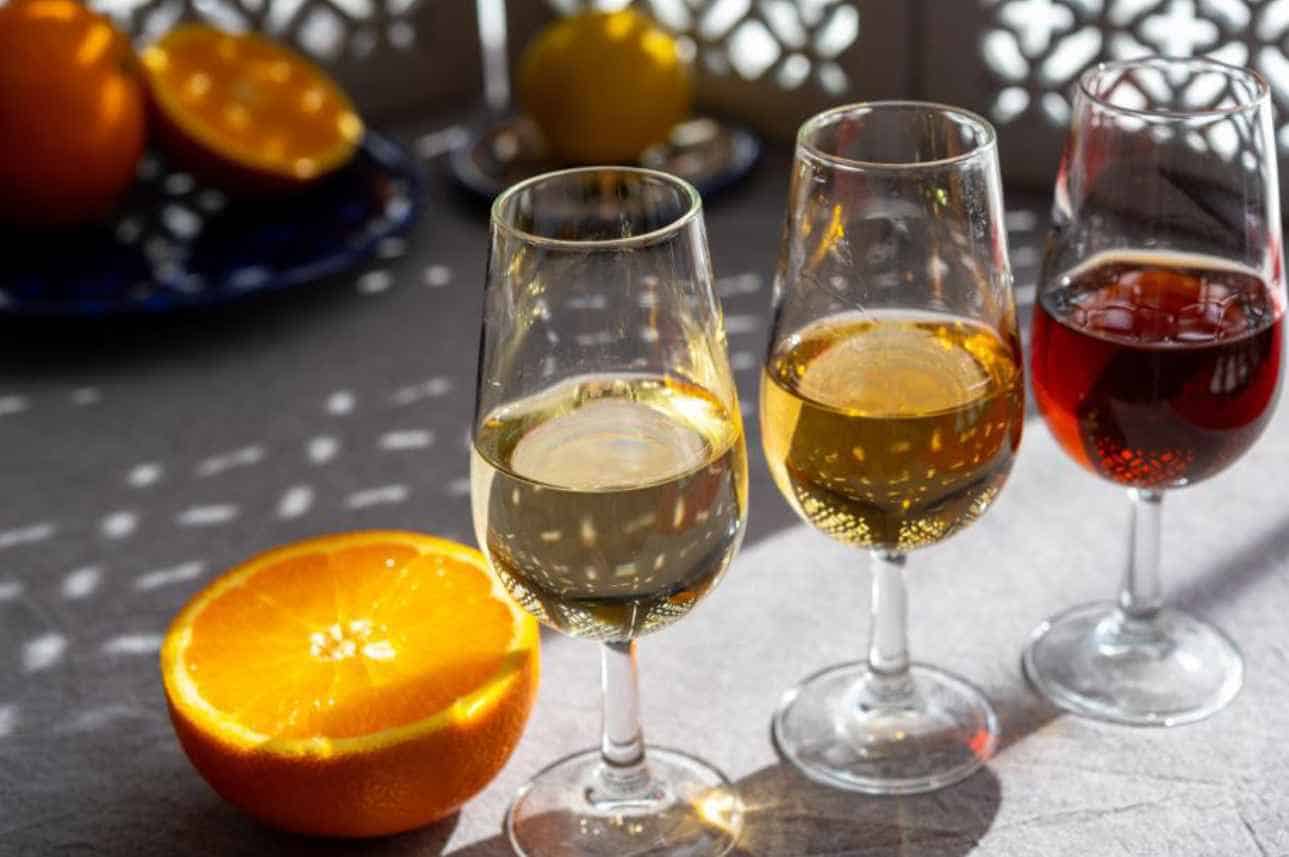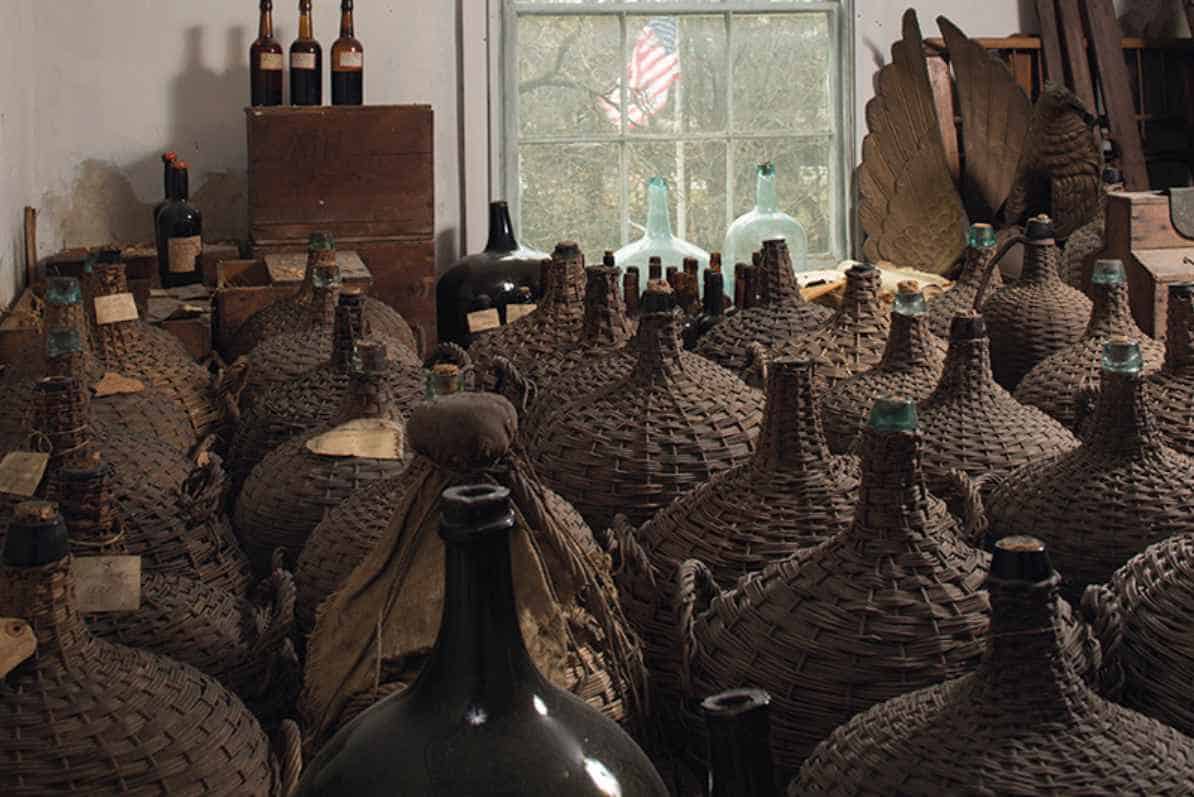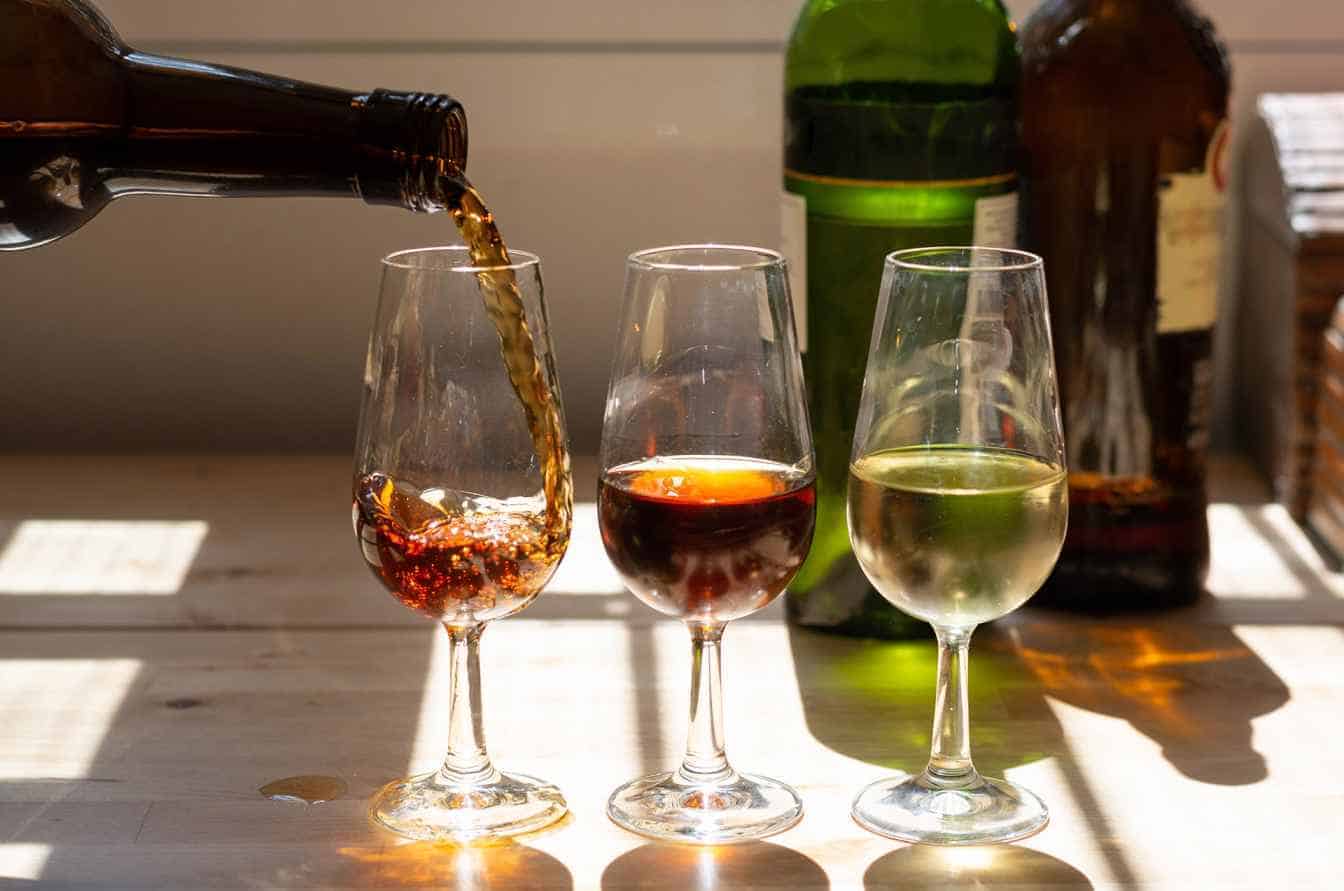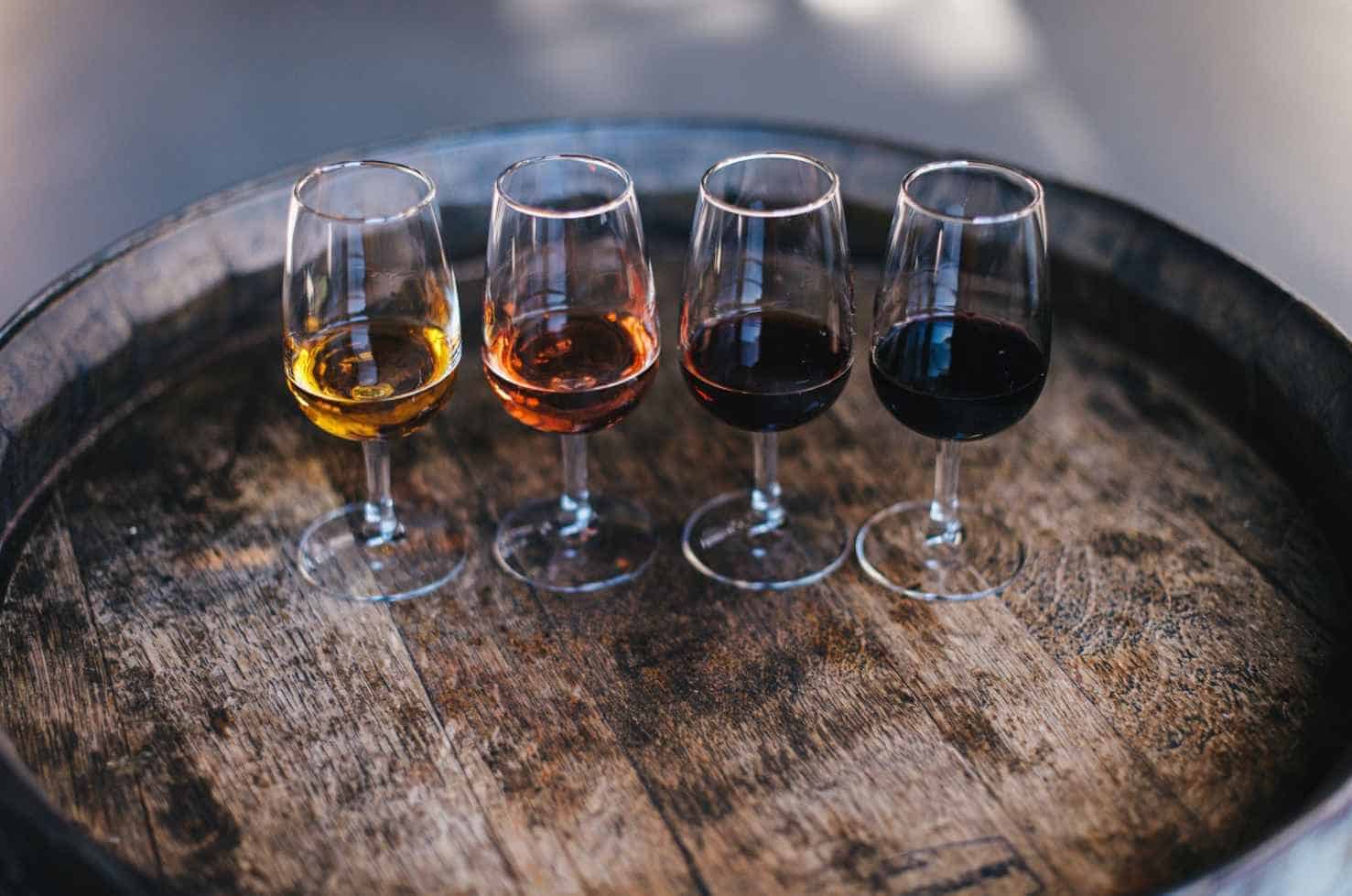Wine enthusiasts may have known about Fortified wine for some time now. However, it is something they are unfamiliar with for beginners in the wine industry or regular people. This article will answer all your questions like ‘What is fortified wine’ and give you a summary of it.
Fortified Wine 101

Often referred to as Dessert wine, fortified wines were created not only to prolong shelf life but also to enhance flavor and stability, achieved by increasing alcohol content through the addition of spirits.
To create fortified wine, a distilled spirit, typically brandy is added during or after fermentation. This increases the alcohol content and can halt fermentation, resulting in a sweeter wine if added early, thus prolonging its shelf life and enhancing its taste. It was commonly used years ago before refrigerators were invented.
Many types of fortified wine nowadays differ from sweet to dry wines. They also vary depending on when the spirit was added in the process, thus affecting their taste and aroma.
Wooden casks, commonly used for aging a variety of wines, are also a traditional choice for storing fortified wines, contributing to their unique flavor profiles. Another clarification that has to be made with fortified wine is that they are not considered a liquor but rather a ‘neutral grape spirit.
History of Fortified Wine

At this point, you may be wondering how people first thought of fortified wines. For that, we have prepared this section to show you how the story all began. It started when people tried importing and exporting wines from other countries or islands.
Back then, they had wooden wine casks that were not as airtight as our modern wine bottles. So during voyages that last for quite some time, most wines turn into vinegar as they reach their destination.
As this becomes a common problem for some people, they try to find ways to preserve the wine inside. One of the ideas they came up with involved adding brandy to the wine, which worked well.
Still, it altered the taste and aroma of the wine and turned it sweeter but with a higher alcohol percentage. After that, no more spoilage was recorded, and more customers became accustomed to the new version of much sweeter wines.
Over the years, some people have spoken out against fortified wines, like Joseph James ‘Baron’ Forrester in 1844. This year, he released a pamphlet entitled “A Word or two on Port Wine,” where he shared his sentiments against the fortification of wines.
This is his attempt to eliminate what he calls ‘abusive’ practices in making wine in Portugal.
His opinions and sentiments were then published in 1848 and became more well-known among other wine experts worldwide. However, it did not stop the production of fortified wines and boosted it even further.
Different Types of Fortified Wine

Now that we’ve discussed some of the most essential points to consider when discussing fortified wine, let’s talk about its different types. Just like any type of wine, fortified wine comes in different variations that you can choose from. Find out more about them below.
- Port: Port wine is a type of fortified wine that was first recorded in Douro Valley, Portugal. While it originates there, it can be produced anywhere nowadays. It is on the sweeter side since brandy is added to it before fermentation is finished to prevent the sugar from converting to alcohol. Most Port wines are usually red, but it is not uncommon to see some whites and dry.
- Sherry: The next fortified wine type is the Sherry. It came from a Spanish city called Jerez de la Frontera and is traditionally made as a dry wine, meaning brandy is added to the mix right after fermentation. Nowadays, this type of wine comes in different variations, and one common variety is sweet dessert wine.
- Moscatel de Setúbal: Over here, we have the Moscatel de Setúbal, which hails from Setúbal city, located on a Peninsula along Portugal’s coast. It’s made with Alexandria grape’s muscat added after the distillation of wine. This wine is known to have a funky scent and floral taste.
- Madeira: Another fortified wine originating from Portugal, specifically the Madeira Islands, is the Madeira wine. What makes it unique from other types of fortified wine is the similar fortification process with Port mixed with Sherry-like features like aroma and taste but sweeter. The brandy in this wine is added at different time variations during the process.
- Vermouth: If you like mixing spices with your wine, Vermouth is an excellent option to consider. It is a fortified white wine used for various things, such as cooking and making cocktails.
- Marsala: Marsala is another dry type of fortified wine because brandy is added at the end of the fermentation process. It hails from Sicily, Italy, and is more commonly used now as a cooking wine.
Pros and Cons of Fortified Wine
After knowing what fortified wine is and its origin, we will give you some pros and cons of drinking this type of wine. Let’s not waste some time and get on with it.
Pros

Benefits the heart
One of the benefits of drinking fortified wine is that it helps people lower risks for heart conditions as they grow older. Studies have proven it, but you must only consider drinking it in moderation. This is because fortified wines can increase our HDL cholesterol levels which help fat blockage in your arteries.
High in antioxidants
Another benefit of drinking fortified wine is its high antioxidants that help prevent several illnesses, such as chronic diseases and cell damage.
This wine can also help people from having common health problems that come with age and lifestyle, like diabetes and high blood pressure. It can even help lower the risk of having certain types of cancer and is proven to be good for your mental health.
Cons

Higher alcohol content
The first downside on our list has something to do with a wine’s alcohol content. Surely enough, if you go ahead and check their labels, you’ll see that fortified wines have higher alcohol content than regular ones.
It is caused by mixing distilled spirits in its normal process, which causes an alcohol content within the range of 17 to 20%.
Higher calorie levels
Since most fortified wines are considered dessert wines, they usually have higher calorie levels. It can cause weight gain if you don’t learn how to drink wine moderately and occasionally. Don’t go too overboard to keep yourself healthy.
Higher sugar content
Lastly, it can be said that fortified wines contain higher sugar content compared to their traditional varieties. Fortified wines are made by adding distilled spirits like brandy into the wine, which stops the sugar from turning into alcohol, resulting in a sweeter drink with high sugar levels.
Be wary of drinking too many sweet fortified wines because it can risk your health.
Frequently Asked Questions

Before we summarize the article, let us elaborate first on the different questions people frequently ask about fortified wines. While there may be many other questions that go through your mind when fortified wine is mentioned, we chose the most common ones to help you better understand this type of wine.
How long does it take to age fortified wines?
In general, the aging time of fortified wines depends on their type. They are stored in wood casks and left to age there for quite some time. Distilled spirits also play a massive role in the aging and production of different sweet and dry fortified wines.
It is also said that the higher the price of fortified wine is equivalent to a longer aging time.
How to store and serve fortified wines?
There is a variety of fortified wines, meaning there are no specifics regarding their storage. Keep in mind the general guidelines regarding wine storage, like maximum shelf life and storing wine in a cool, dry place.
If you open up a bottle of wine, consume it immediately and not let it stay open for a while. The longest one you can keep open is Vermouth, but for others, it’s better to consume in less than a month.
When it comes to serving fortified wines, it also varies depending on the type. Some fortified wines are better when served at room temperature, while some need to be chilled first. You can also have the option to drink it outright from the bottle or use it for cocktails or as a cooking wine.
How to pair fortified wine with food?
Fortified wines are a great drink before or after a meal. With that said, it is best enjoyed when paired with either appetizers or desserts. The best food choices to pair with fortified wines of any type are nuts, cheeses, cream or chocolate desserts, and tarts.
Summary
At this point, you should be ready to answer when someone asks you, ‘What is fortified wine?’. Having a bit of knowledge of fortified wines can help beginners in their wine journey to know more. We hope you were able to learn a lot from our article and share this with your loved ones.


George Moore, co-founder of Wine Flavor Guru, is a charismatic entrepreneur with a rich background in California’s wine industry. Alongside Sylvia, he transformed a Sonoma County vineyard into a source of premium wines. George’s expertise in sourcing exceptional grapes and his approachable style make wine appreciation both accessible and engaging.
